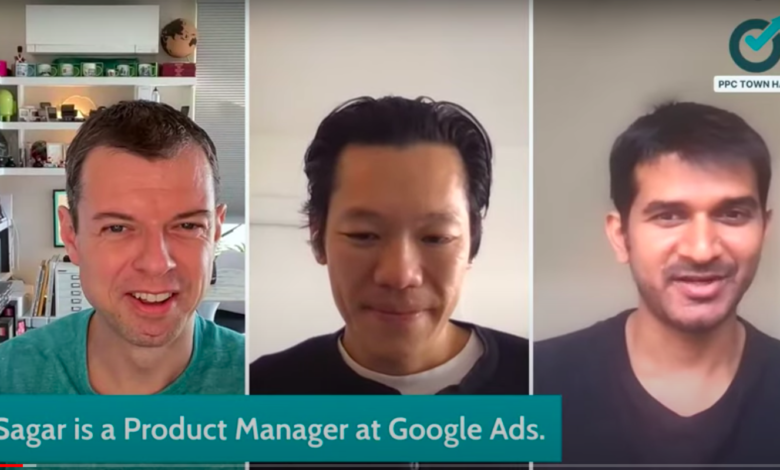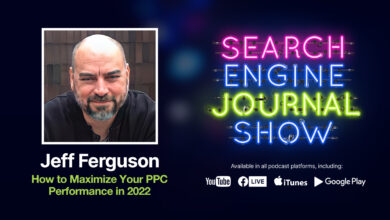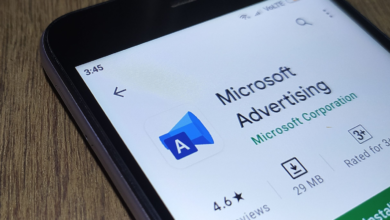Performance Max: 7 PPC Community & Google Team Insights

Google has added many automated tools over the past years including Smart Bidding, Responsive Search Ads, and Affinity Keywords.
Performance Max Campaigns is the latest addition to this growing list of automated PPC tools.
It may be the most revolutionary type of campaign yet in Google Ads.
Performance Max campaigns allow advertisers to promote their products and services across all Google advertising channels – YouTube, Display, Search & Discovery, Gmail and Maps from a single campaign.
Traditionally, to run ads across all Google networks, you need different campaigns and creatives for each channel.
But Performance Max rolls it all into one campaign, which simplifies efforts to reach customers.
It’s a fairly new campaign type, so best practices are still evolving.
To help build more knowledge on this topic, I recently spoke to members of the product team at Google who build Performance Max. (You can watch the full episode of PPC Town Hall below.)
From early best practices to their roadmap, they shared a lot and even answered many of the questions I gathered from the PPC community.
Here are some tips for Performance Max campaigns.
1. Maximum performance takes precedence over other Shopping campaign types
If you’re running a Performance Max campaign alongside a Shopping or Smart Shopping campaign for the same product (or groups of products), the Performance Max campaign will take priority.
This means that the Performance Max campaign ads will be shown to users instead of the ads from the Smart Shopping campaign.
This is similar to how Smart Shopping campaigns are given priority over standard Shopping campaigns when they run simultaneously.
When you upgrade Smart Shopping campaigns to Performance Max by the end of the third quarter of 2022, they will continue to be prioritized over standard Shopping campaigns.
When you upgrade a Smart Shopping campaign to Performance Max, your ads will show on other channels like Search, Display, Discover, YouTube, and Gmail by default.
So when you make the move, you should definitely revisit and review your creative assets to make sure they are all set up correctly.
2. Upgrading Smart Shopping to Performance Max doesn’t mean you have to advertise on all channels
If you’ve liked the convenience of Smart Shopping campaigns and don’t like the prospect of showing your ads in more places, you don’t need to add all assets to a Performance Max campaign.
If you connect your merchant feed but don’t provide any other assets such as video, images, and text, your Performance Max campaign will only display shopping ads.
Jenny Marvin, Google Ads Coordinator said,
For Shopping, when you link a GMC feed to a Performance Max campaign, without adding other assets, the campaign will be eligible to display shopping formats across the Search Network, Display Network, YouTube, and Gmail.
This suggests a broader tip: While there’s no way to select which channels you want ads from Performance Max to appear on, you can achieve this to some extent by choosing which assets you add to a campaign.
3. Keywords from search campaigns take priority over maximum performance targeting
While Performance Max scraps traffic from Shopping campaign types, it’s intended to work alongside your existing Search, Display, and YouTube campaigns. They are designed to be less ravenous in those scenarios.
When you run a search campaign in conjunction with Performance Max, Google will first attempt to show ads from search campaigns.
Jenny Marvin said,
“If the keyword matches the query (or is misspelled), the search will be prioritized. Otherwise, prioritization is based on ad rank. The keyword must qualify.”
The key here is related to “eligibility”.
If an advertiser tries a keyword without success and either removes it or adds it as a negative keyword in their search campaign, the Performance Max campaign may decide to run an ad for it.
The search campaign was not eligible to show an ad, so the Performance Max campaign was flooded with increased traffic.
Their decision to intervene depends on whether they believe increased impressions can lead to an advertiser reaching their stated objective in the specified objective.
This leads us to the next learning.
4. Report accurate conversion data to maximum performance to achieve high quality conversions
Google says that Performance Max is essentially a performance-driven campaign type with conversion goals as its goal. Like all automation, it makes decisions that are informed by the transforming data that it feeds into the system.
So when setting up a Performance Max campaign, be sure to communicate the type of conversions that matter most to your business.
Instead of calling a lead a conversion, consider only reporting a conversion when the lead qualifies or converts into a sale.
In the case of e-commerce, consider not only reporting sales but also using conversion adjustments to account for returns and repeat purchases that may affect lifetime value for a new customer.
Google recently introduced improved lead conversions which makes it easier than ever to report high-quality conversion data.
5. You cannot allocate specific budgets to channels
In a Performance Max campaign, you can’t assign budgets to specific channels yourself.
But Google’s machine learning takes care of that dynamically in real time across all channels. It tries to optimize your stated goal and prioritize the channels that best help it achieve that goal.
According to Google, allocating budgets manually limits Google’s ability to use its machine learning capabilities.
If you manually set monthly budgets across specific channels, you’re essentially reverting to the normal search, display, and other campaigns that may already be running in your account.
But remember the trick about selectively sending assets to a Performance Max campaign to control which channels can show ads. This, along with running multiple Performance Max campaigns, can take back some control.
Ultimately, ask yourself why you want this control.
Andrew Lolk said on another episode of PPC Town Hall that when advertisers ask for control, they often really mean they want actionable visibility.
Advertisers are happy when automation delivers good results, but frustrated when they can’t explain those results to customers and provide strategic advice.
Google promises to build more ideas for Performance Max campaigns.
6. Improve the acquisition of new customers with the new Customer Acquisition feature
One complaint with another automated campaign type, Smart Shopping, was that it sometimes prioritized remarketing and took credit for the conversion from someone already in your path, possibly for non-PPC efforts like SEO.
In these cases, the automated campaign may be overestimating its own usefulness and doing a poor job of growing the business with new customers.
You can avoid this by telling Google to focus on new customers and sharing first-party data about who your existing customers are.
To help you with this, Google has released a new customer acquisition beta objective with which you can improve new customer acquisition and drive performance from this audience segment.
To access now, you can contact your Google Ads representative or wait for the imminent public launch of this new capability.
7. Negative targeting is supported at the account level
While Google doesn’t want advertisers to micromanage targeting, Performance Max campaigns will honor negative keywords and negative placements at the account level.
Some advertisers said it might be helpful to exclude unwanted geolocations or, at the very least, consider settings such as whether you’re targeting physical locations or locations of interest.
Automation can take a lot of guesswork out of finding new pockets of conversions but wastes a lot of money in the process.
When you’ve already tried certain keywords, placements, or geographic targets and didn’t find them working, use the exclusion capabilities to prevent the automation from testing those things again at your expense.
conclusion
Performance Max campaigns show a lot of potential for advertisers, but they’re fundamentally different from other types of campaigns we’re more familiar with with Google Ads.
A whole new set of best practices will evolve as more advertisers experiment with this new type of campaign.
But until then, we learn all we can by asking questions on Google and listening to digital marketers who’ve already tried their hand at Performance Max.
Watch the full April 13, 2022 episode of PPC Town Hall for more:
More resources:
- Performance Max is now supported in Google Ads Editor 2.0
- Google Max Ads Performance replaces Smart and Local Shopping
- Top 10 Pay Per Click Trends To Know In 2022
Featured image: Sammby/Shutterstock


![What’s A Good Google Ads CTR/CPC/CPA In 2022? [STUDY]](https://altwhed.com/wp-content/uploads/2023/01/1672783297_Whats-A-Good-Google-Ads-CTRCPCCPA-In-2022-STUDY-390x220.png)

